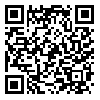Volume 1, Issue 1 (3-2011)
IJOCE 2011, 1(1): 167-187 |
Back to browse issues page
Download citation:
BibTeX | RIS | EndNote | Medlars | ProCite | Reference Manager | RefWorks
Send citation to:



BibTeX | RIS | EndNote | Medlars | ProCite | Reference Manager | RefWorks
Send citation to:
Arfiadi Y, Hadi M. OPTIMUM PLACEMENT AND PROPERTIES OF TUNED MASS DAMPERS USING HYBRID GENETIC ALGORITHMS. IJOCE 2011; 1 (1) :167-187
URL: http://ijoce.iust.ac.ir/article-1-14-en.html
URL: http://ijoce.iust.ac.ir/article-1-14-en.html
Abstract: (41976 Views)
Tuned mass dampers (TMDs) systems are one of the vibration controlled devices used to reduce the response of buildings subject to lateral loadings such as wind and earthquake loadings. Although TMDs system has received much attention from researchers due to their simplicity, the optimization of properties and placement of TMDs is a challenging task. Most research studies consider optimization of TMDs properties. However, the placement of TMDs in a building is also important. This paper considers optimum placement as well as properties of TMDs. Genetic algorithms (GAs) is used to optimize the location and properties of TMDs. Because the location of TMDs at a particular floor of a building is a discrete number, it is represented by binary coded genetic algorithm (BCGA), whereas the properties of TMDS are best suited to be represented by using real coded genetic algorithm (RCGA). The combination of these optimization tools represents a hybrid coded genetic algorithm (HCGA) that optimizes discrete and real values of design variables in one arrangement. It is shown that the optimization tool presented in this paper is stable and has the ability to explore an unknown domain of interest of the design variables, especially in the case of real coding parts. The simulation of the optimized TMDs subject to earthquake ground accelerations shows that the present approaches are comparable and/or outperform the available methods.
Keywords: tuned mass dampers, optimization, genetic algorithm, hybrid coded, real coded, binary coded, earthquake
| Rights and permissions | |
 | This work is licensed under a Creative Commons Attribution-NonCommercial 4.0 International License. |





